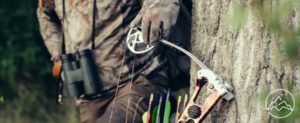According to recent statistics, selecting the ideal bow riser is a critical aspect of achieving optimal performance and accuracy in archery. The bow riser serves as the fundamental foundation upon which the remaining components of the bow are built, playing a pivotal role in maintaining balance, stability, and shot precision. Typically constructed from metals like aluminum or carbon fiber, or even wood in some cases, the riser’s weight and length significantly impact the overall feel and handling of the bow. Lightweight risers offer greater agility but may sacrifice stability, while heavier risers provide enhanced stability at the expense of maneuverability. Furthermore, considerations such as size and material should be tailored to individual preferences and needs, taking into account factors like comfort and endurance. By carefully selecting the appropriate bow riser, archers can ensure peak performance and fully immerse themselves in the exhilarating sport of archery.
Key Takeaways
- The bow riser is a crucial component that supports the bow limbs and determines the overall feel and performance of the bow.
- Key components of a bow riser include the limb pocket, tiller or limb bolts, sight bushing, arrow shelf, arrow rest bushing, grip, and stabilizer bushing.
- The material and length of the riser affect the weight, stability, and performance of the bow.
- When choosing a bow riser, consider personal style, the type of riser material based on personal needs and preferences, and the size of the riser.
What is a bow riser?
A bow riser serves as the foundational component of the bow, providing support for the limbs and playing a crucial role in determining the overall balance, stability, and performance of the bow. The bow riser is available in various materials, each offering distinct advantages. Wood risers are known for their natural feel and aesthetics but require regular maintenance to prevent warping and cracking. Aluminum risers are lightweight, durable, and resistant to weather conditions, making them a popular choice among archers. Carbon fiber risers are even lighter and offer excellent strength and stiffness, but they tend to be more expensive. To maintain and care for a bow riser, it is important to regularly inspect for any signs of damage, clean it with a mild detergent, and store it in a cool, dry place when not in use.
Components of a bow riser
One crucial aspect of understanding bow risers is examining the various components that make up this important part of the bow. These components play a crucial role in determining the overall feel and performance of the bow. Some key components of a bow riser include:
- Limb pocket design: The limb pocket holds and allows the bow limbs to pivot and flex. Different designs can affect the bow’s performance, including limb alignment and limb pocket angle.
- Grip material options: The grip provides a secure hold on the bow and can be made of different materials for added comfort. Common options include rubber, wood, and synthetic materials. Each material offers different levels of grip and comfort, allowing archers to choose the one that best suits their preferences.
Understanding these components is essential for selecting the right bow riser that aligns with an archer’s shooting style and needs.
Choosing the right bow riser
When considering a bow riser, it is important to carefully evaluate the different options available to ensure the selection aligns with an archer’s shooting style and needs. There are several factors to consider when selecting a bow riser. Firstly, the material of the riser plays a significant role in its weight, strength, and performance. Archers should choose a material that suits their preferences and requirements. Secondly, the length of the riser affects the weight and ease of handling the bow. Shorter risers are generally less forgiving, while longer risers offer more stability and forgiveness. Additionally, the size of the riser impacts the weight, stability, and overall performance of the bow. It is essential to find a riser size that suits the archer’s physique and shooting style. By considering these factors, archers can choose the right bow riser that enhances their shooting experience.
Frequently Asked Questions
Can I use a compound bow riser on a recurve bow, or vice versa?
Using a compound bow riser on a recurve bow, or vice versa, is generally not recommended. The two types of risers have different designs and functionalities that are specific to their respective bow types. Compound bow risers are typically shorter and have a more complex system for accommodating the bow’s components. Recurve bow risers, on the other hand, are longer and have a simpler limb fitting system. Interchanging these risers may result in compatibility issues and compromise the overall performance and safety of the bow.
How do I determine the ideal weight for a bow riser?
Determining the ideal weight for a bow riser involves considering several factors. Firstly, the weight of the riser should be balanced with the overall weight of the bow to ensure optimal performance and stability. Additionally, the shooter’s strength and physical capabilities should be taken into account. Heavier risers provide more stability but may be more tiring to hold, while lighter risers are easier to handle but may sacrifice some stability. Ultimately, finding the ideal weight requires considering these factors and personal preferences.
What is the purpose of a stabilizer bushing on a bow riser?
A stabilizer bushing on a bow riser serves as a critical component for enhancing the performance and accuracy of a bow. It provides several benefits, including improved balance, reduced vibration, and increased stability during the shot. To properly install a stabilizer bushing, it is essential to ensure a secure fit and alignment with the riser. This can be achieved by using the appropriate tools and following the manufacturer’s instructions. Overall, the stabilizer bushing plays a vital role in optimizing the shooting experience and achieving precise shots.
What are the benefits of using a carbon fiber bow riser?
Carbon fiber bow risers offer several advantages over aluminum bow risers. Firstly, carbon fiber is lighter in weight, making the bow more agile and easier to handle for extended periods of time. Additionally, carbon fiber is known for its high strength-to-weight ratio, providing a durable and sturdy foundation for the bow. This material also absorbs vibrations and dampens noise, resulting in a smoother and quieter shot. Overall, carbon fiber bow risers provide improved performance, stability, and comfort for archers.
Are there any specific maintenance requirements for bow risers?
Maintenance requirements for bow risers include regular cleaning and inspection to ensure proper functioning. Common issues with bow risers can include loose limb bolts, worn arrow rests, and damaged sight bushings. To maintain a bow riser, it is important to clean it regularly with a soft cloth and mild detergent. Inspect all components for wear or damage, and tighten any loose bolts or screws. It is also recommended to consult the manufacturer’s guidelines for specific maintenance instructions.
Conclusion
In conclusion, selecting the ideal bow riser is essential for achieving optimal performance and accuracy in archery. The bow riser serves as the foundation of the bow and plays a crucial role in balance, stability, and shot accuracy. Factors such as the material, weight, and length of the riser should be carefully considered based on individual needs and preferences. While lighter risers offer agility, heavier risers provide stability. By carefully choosing a bow riser that suits one’s requirements, archers can enhance their shooting experience and maximize their potential.
One potential objection to consider is the cost associated with high-quality bow risers. While it is true that premium risers can be more expensive, they offer superior performance and durability, making them a worthwhile investment for serious archers. The visual representation below illustrates the different components of a bow riser, highlighting its importance as the foundation of the bow.
[Insert visual representation of bow riser components]









